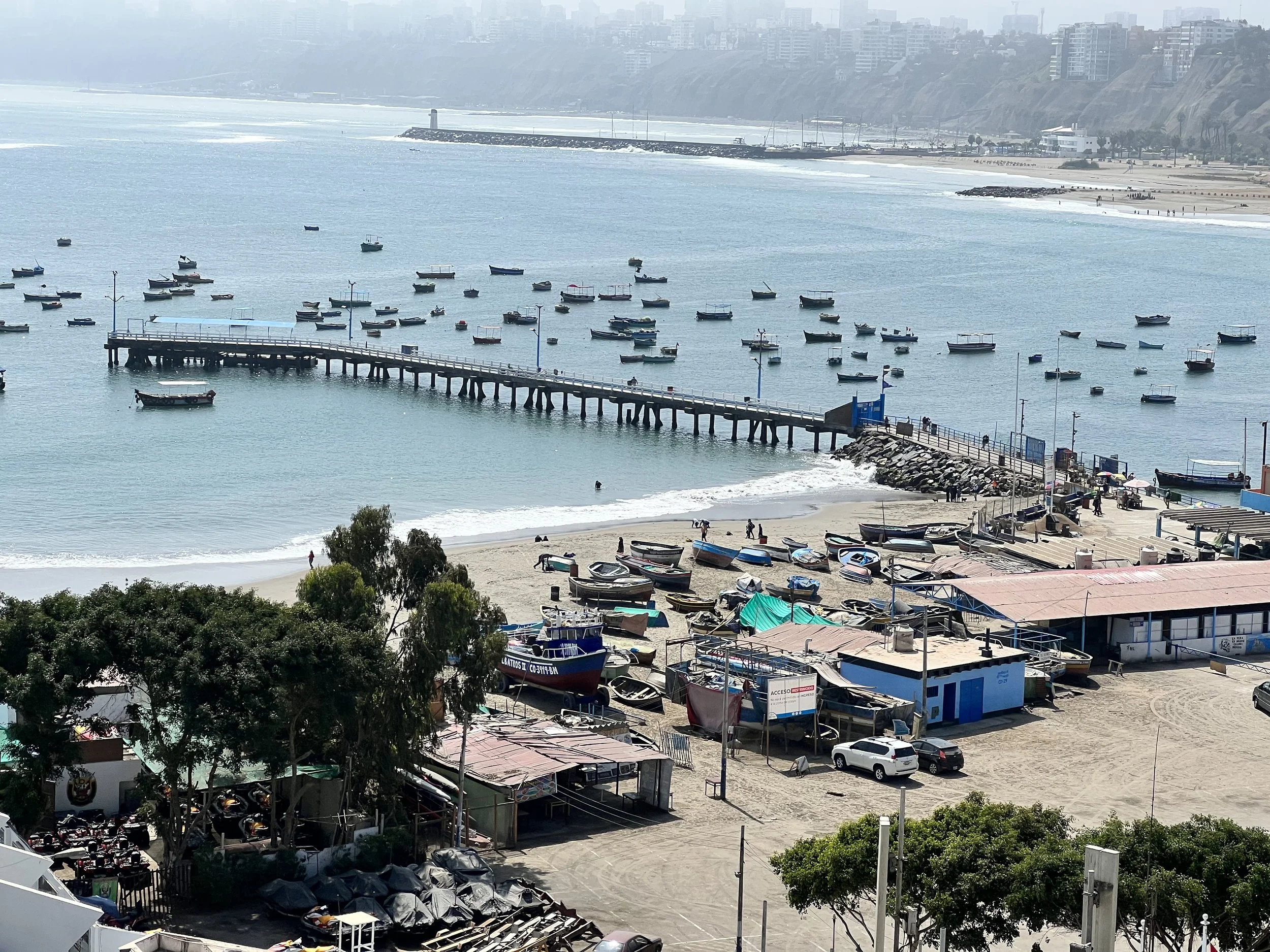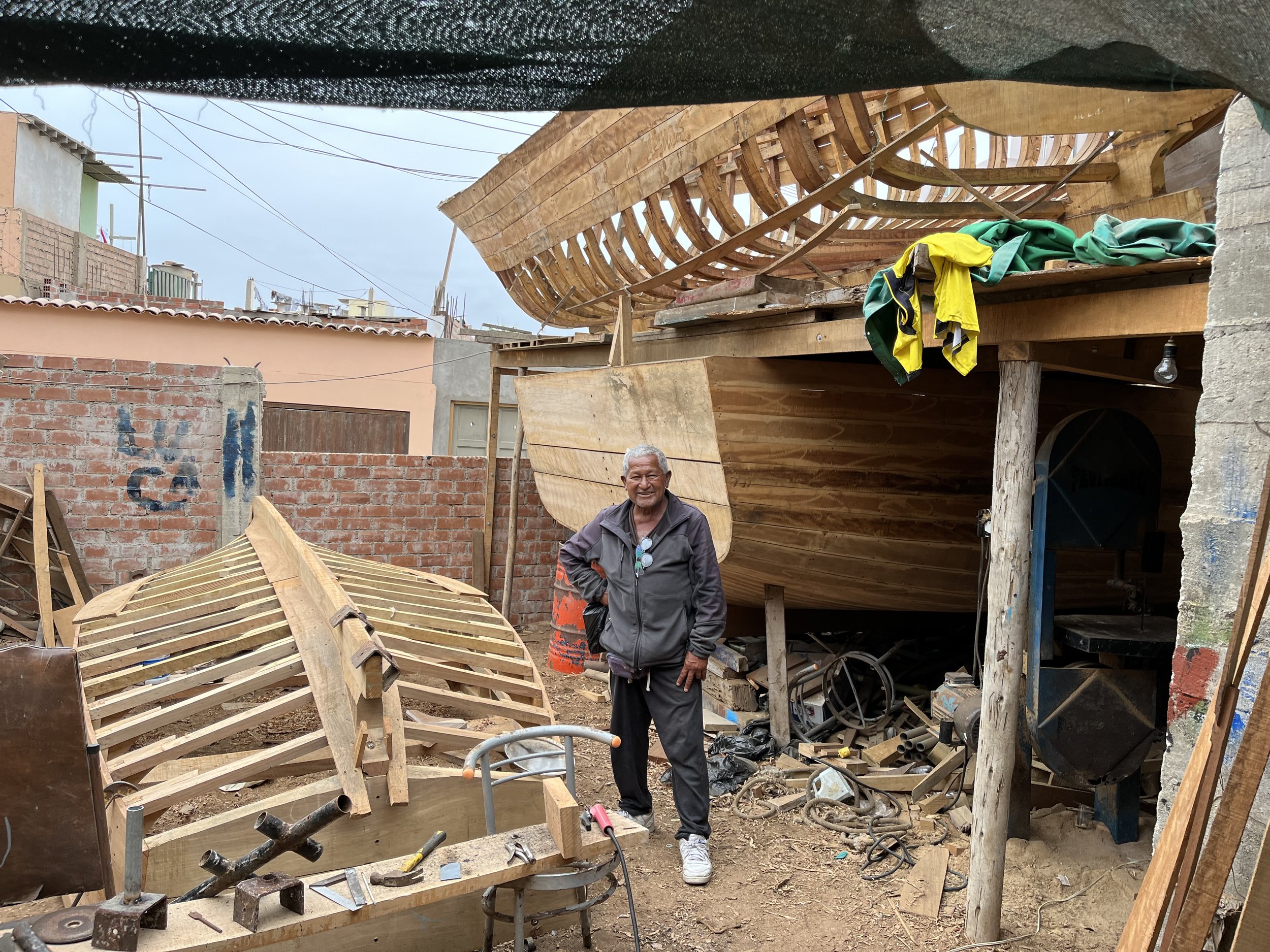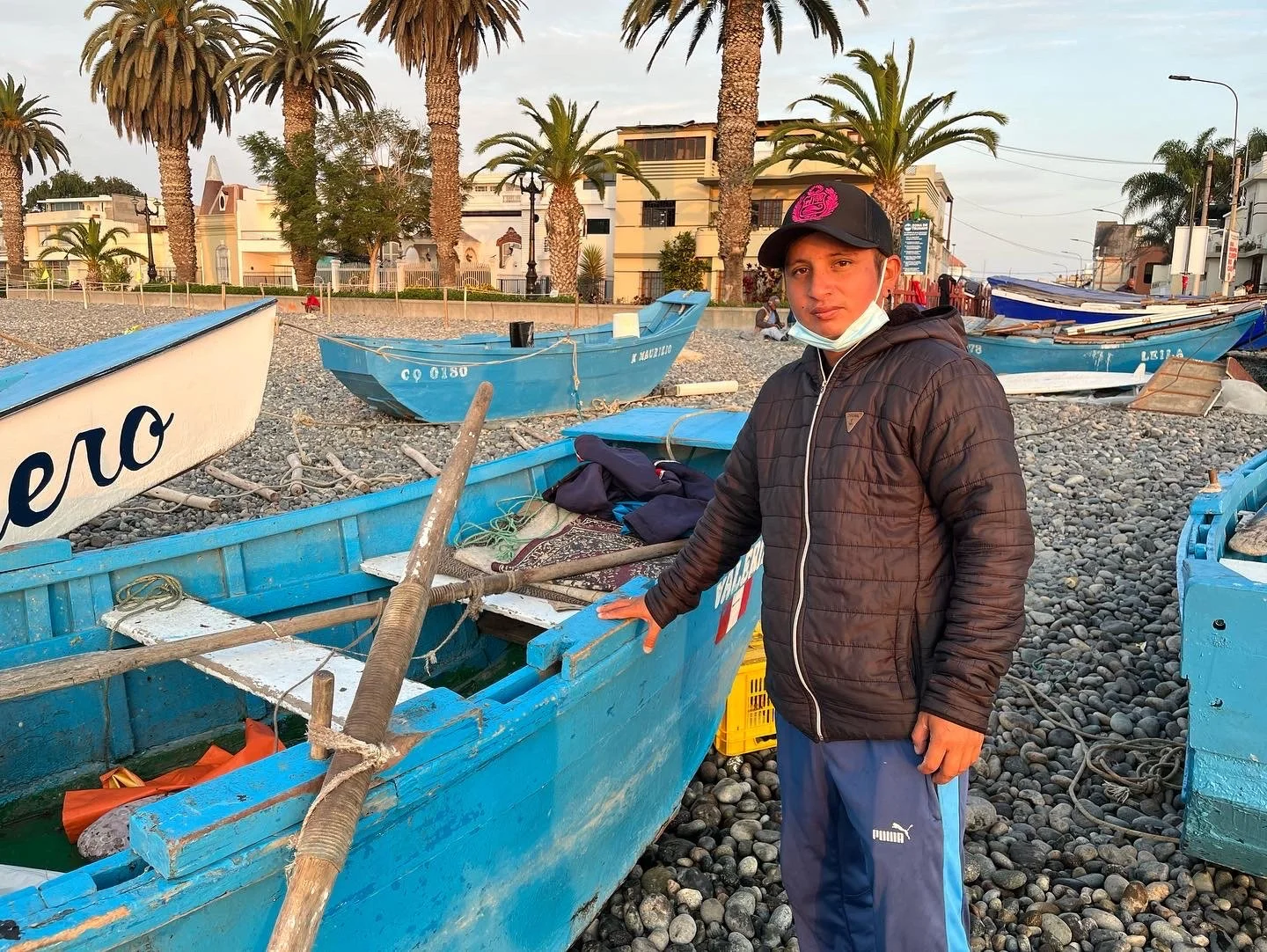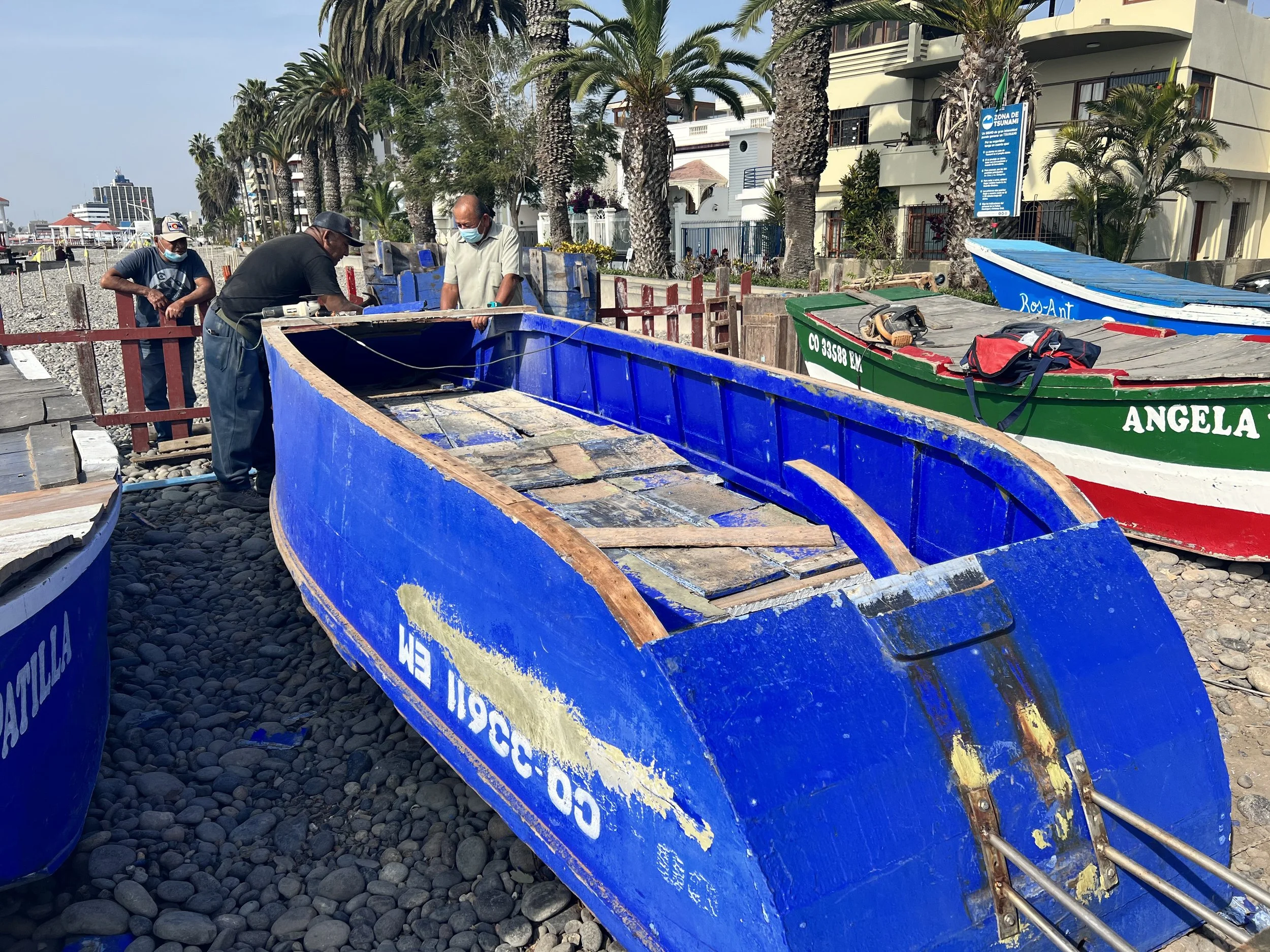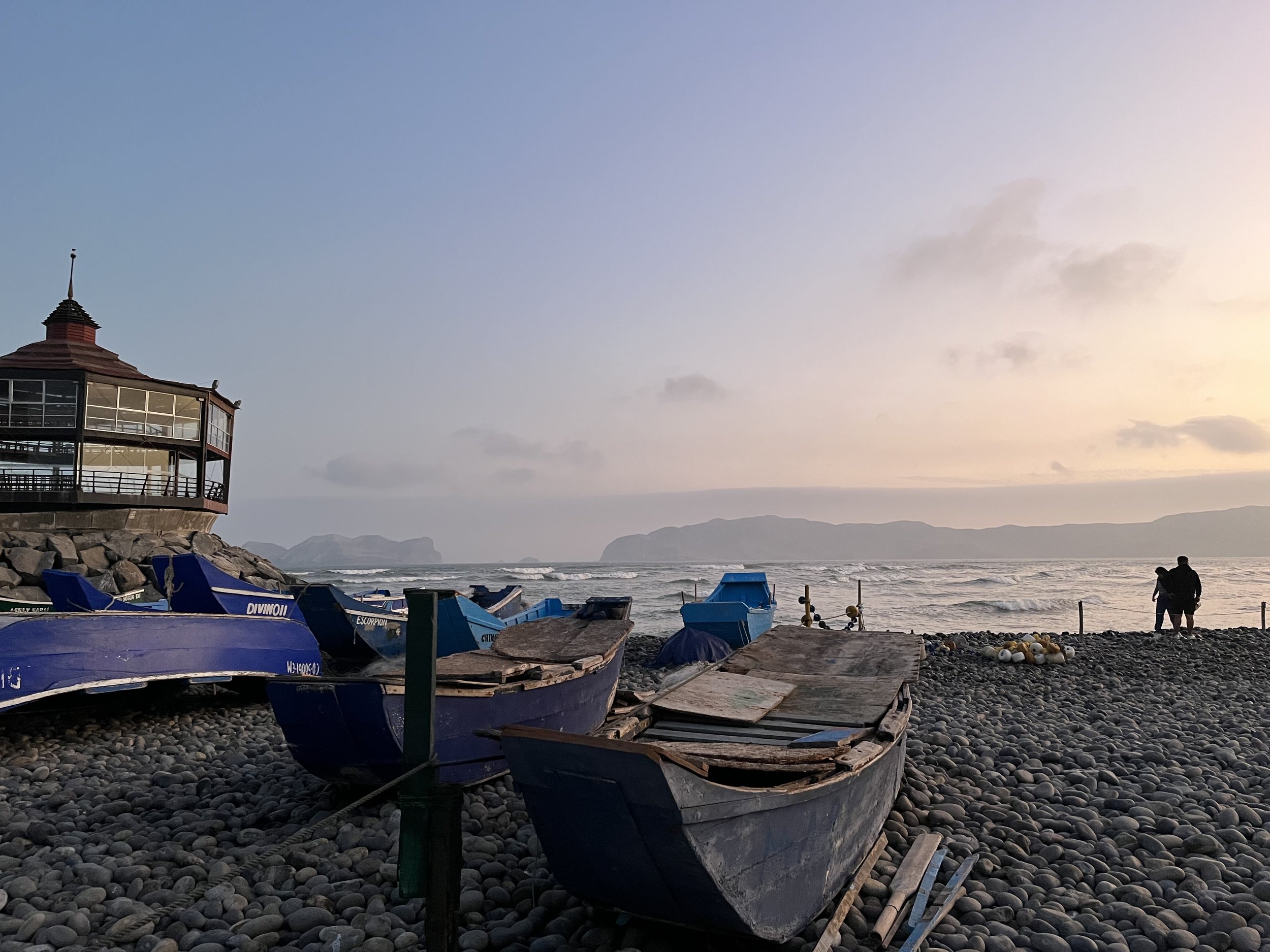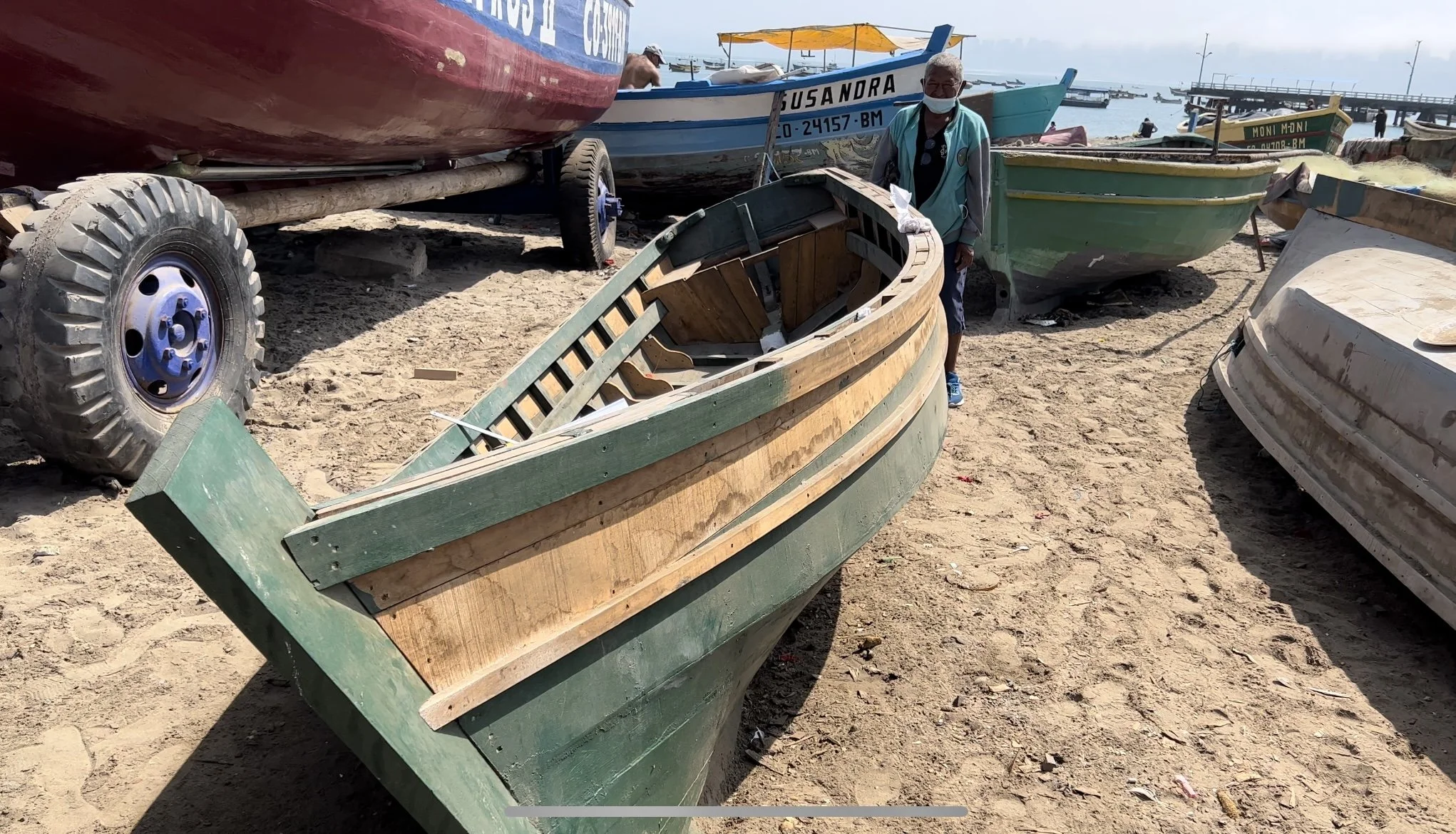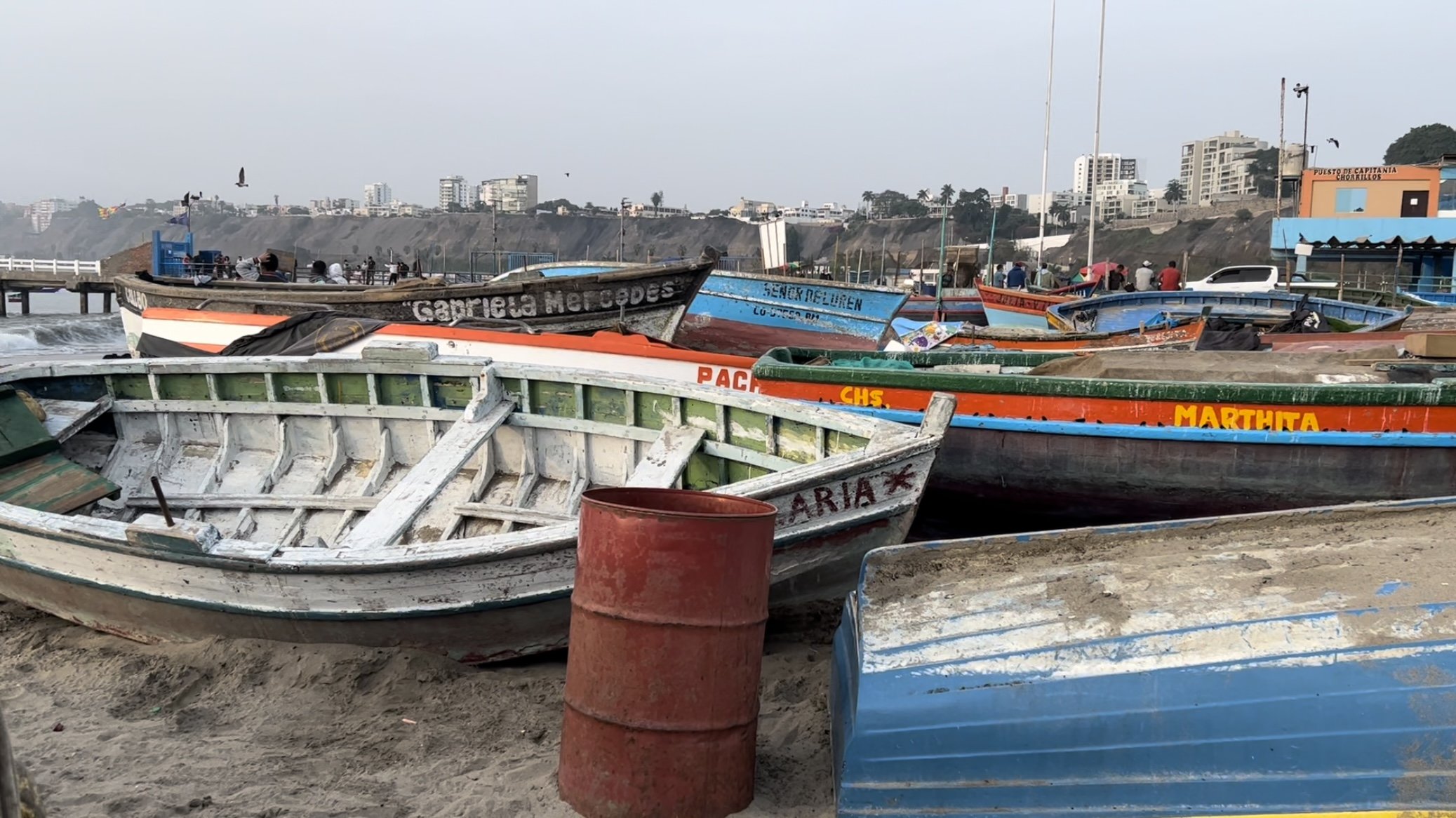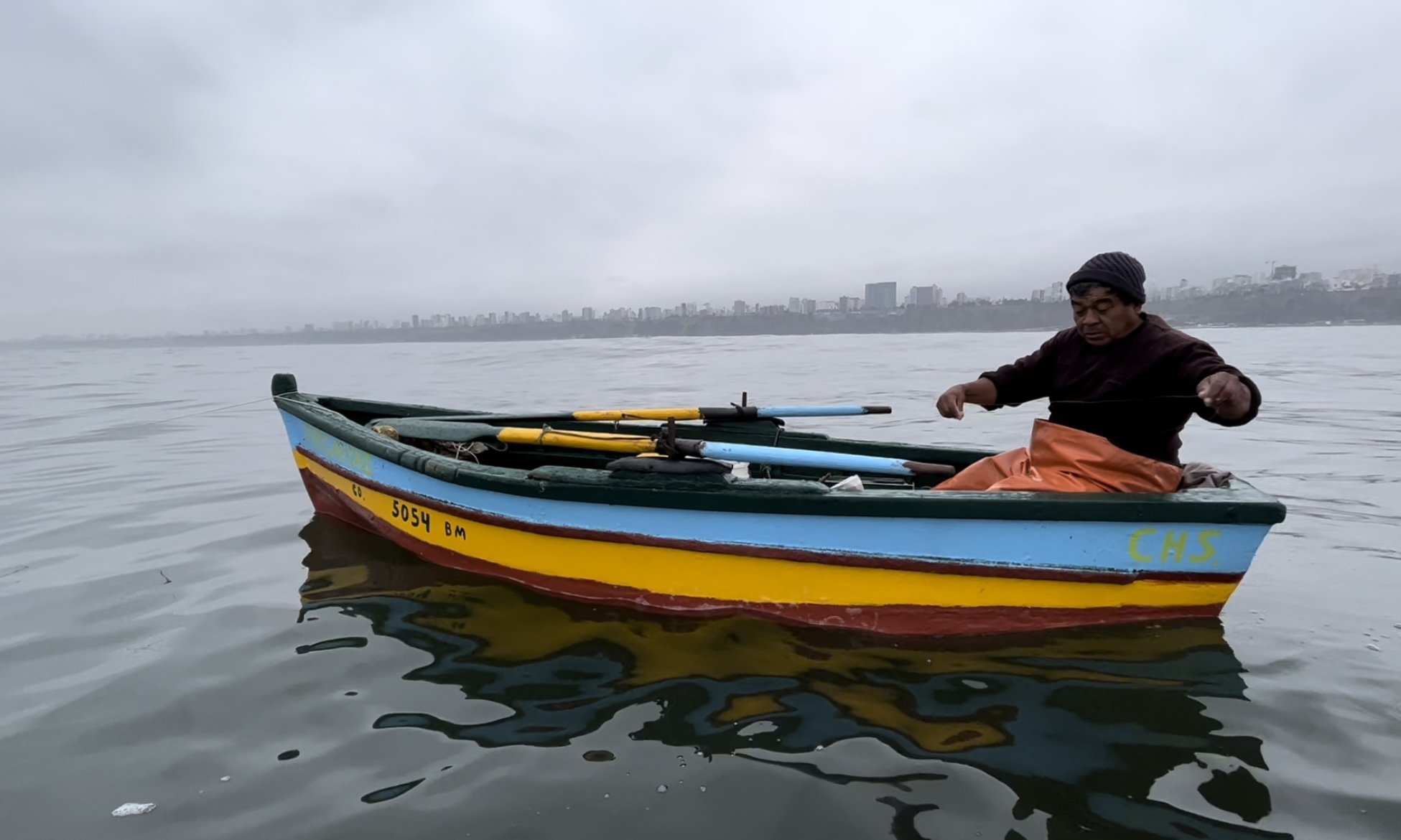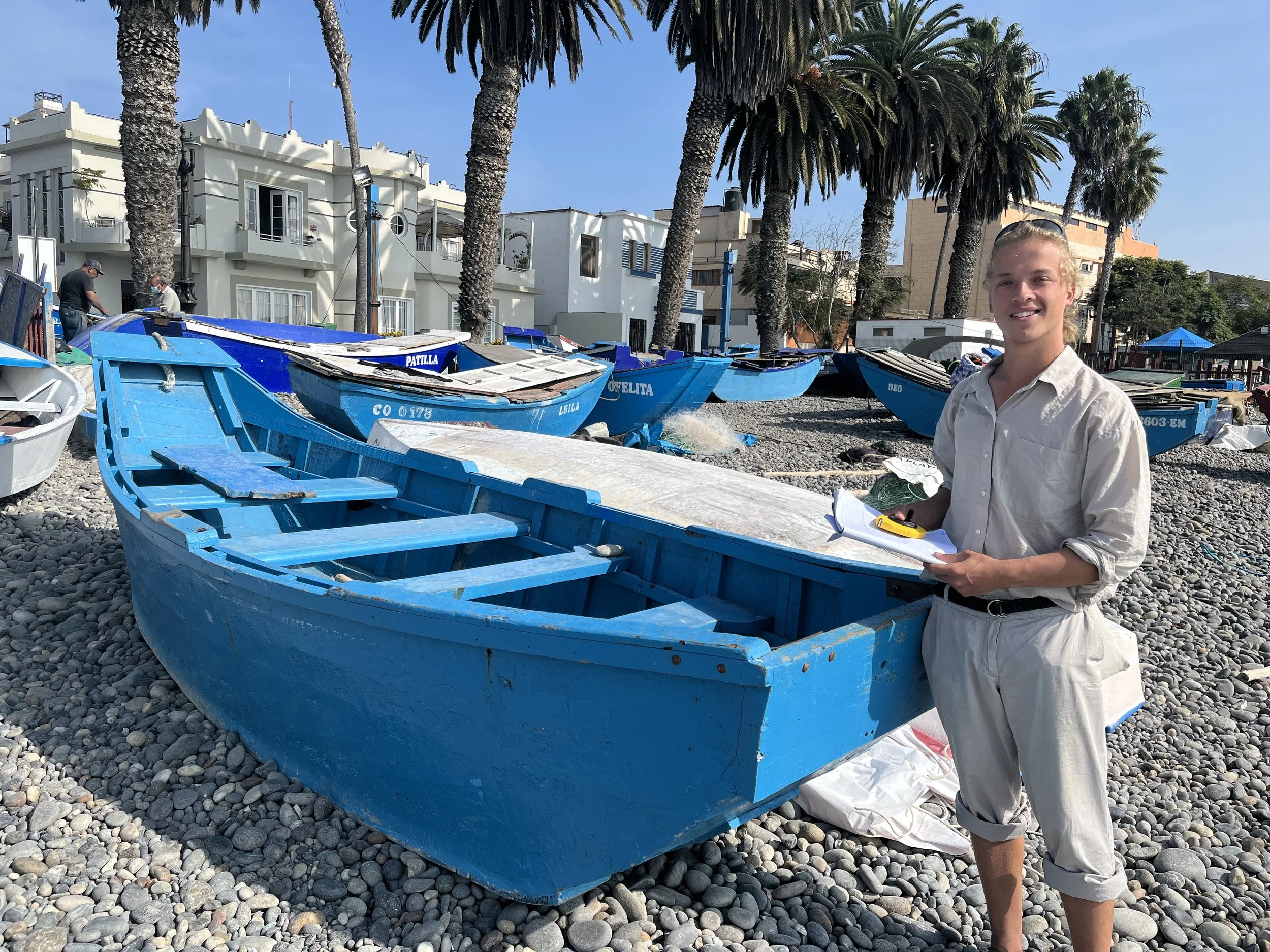Peruvian Traditional Boats Part 2
In part one I introduced you to my friend, the retired fisherman, Joaquin. We’re now going to wander down to the beach; you, me and Joaquin, to measure and photograph the boats. Taking our time, and taking it all in, we’ll spent the morning by the beach then afterwards Joaquin will take us through the back alleys of his neighbourhood, Chorrillos, for a special treat.
I went down to the beach on Monday morning. I had a bag full to the brim with two hamburgers, camera and accessories, tape measure, steel rule and of course, a notepad and pen. Joaquin and I had roughly arranged to meet at 9 o’clock, when I arrived he was nowhere to be seen. The fishermen knew who I was looking for, Joaquin was at the dentist they told me, (that one was pretty easy to mime) perhaps he would be back in an hour…Not to worry I thought, plenty to look at here. Just as I was contemplating my next move, out popped Joaquin with a big grin on his face, showing off those pearly whites. I could only assume the appointment went well.
My plan was for Joaquin and I to go back to the boatbuilders up the big hill, I wanted to conduct an interview and do some filming. So, off we went up the hill, you know the way by now. Unfortunately, as we arrived at the front door two things became clear; firstly, I had a strange craving for an energy drink, and secondly, the boatbuilders were not at work today, there was silence behind those doors. We mulled around, figuring out a plan; at that moment the rubbish truck went down the street, led by a boy walking ahead with a homemade, much improved, triangle. The sound was almost deafening as he proclaimed the arrival of the truck to our street, dogs woke from their slumber, motortaxis moved onto the pavement and rubbish bags fell from second story windows, quite a sight really.
A couple of men appeared, where from I’m not sure, they were labourers at the boatyard. In Australia we’d call them Lackies or TA’s, tradesman’s assistants. They told me the boatbuilder was off buying wood, I smiled, I bet he was having fun. They weren’t working today either, but were nice enough to unlock the door and let me take a few pictures while some questions were volleyed back and forth. Unfortunately, the guys had something better to do that humour me all morning, so Joaquin and I headed back to the beach. I made it clear, with a tape measure in one hand, that I would like to measure the boats on the beach, “Well of course!”, said Joaquin’s eyes.
While walking around the boats and fishermen on the beach, with my uneducated eyes, I could count four distinct types of craft. The smallest a very traditional looking punt, the next a typical vee bottom dinghy, then there were two larger boats, an open motorboat used for both fishing and tourist trips, and the beauty of the fleet: the flush decked double enders.
The Punts
These colourful yet rugged boats are the most recognisable of all Peruvian fishing craft, save for the reed boats, of course. I’m not sure what they’re called in Spanish, but it’s something to do with being a little shoe, a common reference around the world. I didn’t see many of these boats on the beach at Chorrillos, where the main fishing fleet in Lima resides. However, they are the only type of boat on the beach at La Punta, which is an old world part of Lima (pictured above). These boats are manned by two men, one to row, and the other to pay out the nets. Like the other Peruvian fishing craft, they are rowed standing up, using thole pins as opposed to rowlocks. These boats are all relatively uniform in size and shape. I did measure one that was considerably larger, it had closely spaced thwarts and an outboard on the stern, I believe this would be a boat for the local tourism industry, for tours of the point and sea lion viewing.
I measured three boats, their lengths were: 13’ 7”, 14’ 11” and 15’ 1”. Their beams, respectively, were: 5’ 5”, 5’ 5” and 5’ 9”. Which gives a length to beam ration of: 2.5, 2.7 and 2.6. Make no mistake, these are big boats. The shortest boat had her oars in place so I was able to measure those too, they were 8’ 6” long. Owing to the relatively consistent beam of these boats, I assume oar length does not differ a great deal. The bottoms are dead straight athwartships, with very little rocker fore ‘n’ aft for most of their length. The sides have only a slight lay in them; in cross-section these boats resemble a box more than a shoe. As you can see in the photographs, the bottom turns abruptly up in the stern, rising to meet a thin transom. In the bow the curve is less acute, but in the same manner it curves upwards to meet a small transom. These boats are built very conventionally; they are cross-planked on the bottom, caulked, then payed with epoxy, and the sides are planked longitudinally; strengthened and fasted to vertical members terminating at the sheer and the top of the chine. There is no keel on these boats, however, at each end, there is a large curved timber, much like an inner stem. One can only imagine that their presumably poor rowing ability is more than made up for with their stability and suitability for catching the local fish in the local conditions.
These boats do not travel far, rowing just off the beach to drop their nets. Although many had the option for an outboard motor, I believe most are still propelled using oars alone. When the fisherman come back after their day, the boats are pulled up the rocky beach using an electric winch mounted on a large post at the back of the pebbly beach. Once ashore the catch is removed, the nets are cleaned and the oars stowed. Neat, cross planked covers are then placed atop. It doesn’t rain in Lima, so these boards are fitted with healthy gaps, fixed in neat, removable, 2 foot sections, and locked with padlock; keeping out the sun and thieves while providing ample ventilation. These stocky, colourful and loveable little craft are an icon of Peruvian artisanal fishing culture. May their future be bright and their nets full.
The Vee-Bottom Dinghy
Now we’ll move onto the other small boat in the fishing fleet. The vee-bottom dinghy. This style of craft is ubiquitous in Eurocolonial nations around the world. Seventy years ago in Australia you would have found very similar boats in great numbers, also fishing, just as these ones do. I’m sure the same can be said for North America. Their simple construction and adaptability to many a task make them an ideal fishing boat. This type was the most common on the beach at Chorrillos, outnumbering the other types by two to one.
They can be rowed or motored, just like the punts. Their small transoms clear the water, making them ideal rowing boats. I believe they are known as ‘Chalana a Remo’, which simply translates to rowboat. Of the different craft mentioned, the rowboats had the most variation in size. Their lines were all very similar; transom shape, stem rake and midship section all being alike, however, length and beam, and even their ratios, differed quite a bit. There were long fine boats, short beamy boats, and everything in between. Some had small inboard motors housed under a short deck running athwartships, separating the boat in two; these models had very old fashioned looking two bladed propellers. For the most part these dinghies are rowed.
I measured two of these boats, the larger was 17’ 9”, the smaller was 15’ 7”. Their beams were 6’ 4” and 5’ 7” respectively; giving them both length to beam ratios of roughly 2.8. Planking ranged from 1/2 inch to 5/8. Interestingly, these boats have no inner keel, the top of the keel timber is flush with the inside of the planking. Nor do these boats have a chine. I assume that with such closely spaced frames and thick planking, a chine becomes unnecessary. The frames on each side run down to the keel, where they are attached to each other by an informal floor timber that is cut so the top face follows the angle of the vee. Each frame is joined where the bottom and the sides meet with a curvaceous knee, some boats omitted this knee under the centre thwart. As with all the fishing boats on the beach, construction is heavy, frames are roughly 1 3/4” moulded, and 1 1/2” sided. These boats have heavy gunwales and inwales, some with a covering board on top. I was able to row one of these boats, standing up; the motion was easy, but for me, they felt clunky and sluggish. “Try earning a living from one of your boats then” I hear the fisherman say…undoubtedly these craft are well suited to their task.
I don’t believe there is anything particularly Peruvian about these boats, I bet the great Howard Chapelle measured something very similar in his time, but no doubt the local boatbuilders here have their own methods and details that make these boats unique. The fact they they are still being built to perform the same task they have done for the past 100 years, puts the sharpies of Lima in a very exclusive club indeed. The workboat lives on.
Well, it’s about time we stopped for some lunch, all this observing is making me hungry, as I mentioned previously, our friend Joaquin will take us further through the back streets of Chorrillos, we’re going to eat Ceviche, fresh raw fish cured in citrus juices, Peru’s most famous dish. We meandered through a few alleyways, I’m sure by now you can imagine what they’re like, but with the added touch of saxophone wafting form a second story window, you couldn’t make this stuff up. After a few more twists and turns, a few steep hills, we arrived at a rinky-dink ceviche restaurant.
Joaquin and I sat down, he ordered our meals. First came a small bowl of Canchita (Peruvian popcorn) and banana chips, we chatted happily while enjoying the view and sweet salty air. Some minutes later our ceviche arrived, along with two bottles of Inca Kola. We were set. We proceeded to eat in silence, sign language get’s difficult with a knife and fork. Ceviche is delicious, it’s fresh and tangy. Combine it with a bit of sweet potato and red onion with chilli, and you’ve got yourself a mouth watering, tastebud tingling assault of the senses. Anyway, now that our hunger and curiosity has been well and truly satisfied, we better get back to boats.
Read more in Part 3…
